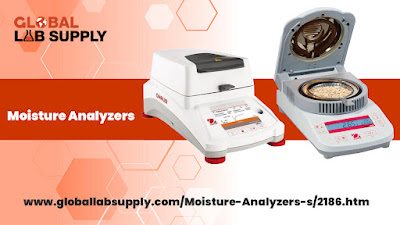Moisture analyzers, also known as moisture meters or moisture balances, measure the moisture content in samples. They can analyze gases, liquids, and solids and are particularly important pieces of equipment when it comes to testing certain types of products such as pharmaceuticals, food, plastics, fuel, and hydrocarbons. In this post, we reveal how moisture analyzers work and best practices for using them.
How Moisture Analyzers Work
The premise behind lab moisture analyzer is quite simple. They work using a Loss On Drying (LOD) or thermo gravimetric method to determine how much moisture is in the sample. Here are the basic steps:
- The moisture analyzer weighs the sample and records the initial weight.
- A heating element radiates infrared heat to dry the sample. (A few different types of heating element may be used in moisture analyzers, including halogen lamp, quartz lamp, metal, or ceramic.)
- The sample is weighed periodically until the weight no longer changes (this means the sample is fully dried).
- The final weight is subtracted from the initial weight to determine the moisture content.
If you need to find out the solid content of a sample, you simply subtract the moisture content from the initial weight.
Note that moisture doesn’t only refer to water. It includes any substance that will evaporate as a result of infrared heating, for example, alcohols and organic solvents.
Best Practices for Using Moisture Analyzers
Here are some tips to help ensure you get accurate results when using a moisture analyzer:
- Position the analyzer correctly. Make sure the unit is placed away from any sources of draft or vibration such as air vents or refrigerators. It should also be in a non-harsh, clean environment. High humidity, extreme temperatures, or excess dust could affect the accuracy of results.
- Take safety precautions. Assess the risk involved in heating your particular sample. Work in a fume hood where necessary and never try to dry explosive or combustible substances.
- Use clean sample pans. Used pans should be disposed of and you should only use clean, intact pans.
- Ensure an even sample spread. You should cover the entire surface area of the pan with a thin, even coating of sample.
- Don't overload the unit. Be sure to note the maximum capacity of the analyzer as overloading it could damage the internal weighing mechanisms.

No comments:
Post a Comment